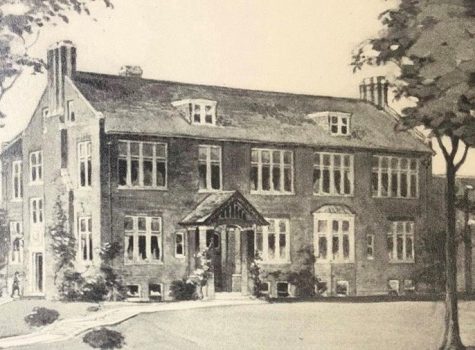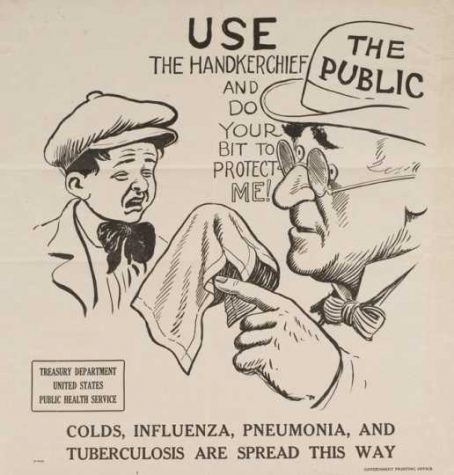1918 Influenza
September 18, 2020
In March of 1918, the first cases of H1N1 influenza (otherwise known as the “Spanish flu”) were recorded in the United States, remaining mainly in army barracks, such as Camp Funston in Kansas. However, as more and more soldiers across the country were deployed to serve in World War I, the virus followed, with the first waves of the pandemic beginning in large east coast cities such as Boston and New York, and throughout the year gradually made its way towards the Midwest.
On September 27th, 1918, the virus finally arrived in the Twin Cities, reportedly from a man who had come home from a trip to see his son in Camp Dix, New Jersey. One day later, on the 28th, the University of Minnesota announced that the University hospital would no longer allow new patients or visitors with the discovery of 16 new cases among their nursing staff. The next day, on the 29th, the number of cases at Fort Snelling jumped from 56 to 108. By October 3rd, there were around 100 cases reported in Minneapolis. On October 6th, City Hospital reported 60 serious cases of influenza being treated in their ward.

On October 11th, Minneapolis’s City Health Department ordered the closure of all theaters, churches, dance halls, saloons, and schools, excluding the University of Minnesota. The school closure lasts all but ten days, with the School Board planning on reopening on Monday, the 21st. In retaliation, Minneapolis Health Commissioner Guilford threatened a restraining order against the Board in order to keep schools closed. The University of Minnesota also planned to reopen on the 23rd, but attempts to postpone them failed, as the city of Minneapolis had no jurisdiction over a state school. Superintendent of Schools B. B. Jackson announced that winter vacation would instead be used as a make up time for students affected by school closures. A week later, on Halloween, a tentative date for public school reopening was scheduled for November 11th.
Finally, on November 5th, St. Paul joined Minneapolis in a city-wide closure of public spaces, including schools such as St. Paul Academy and the newly-formed Summit School (SPA as it is now known did not become a reality until 1969). Macalester College also decided to close. Ten days later, both St. Paul and Minneapolis’s ban on public gatherings, along with school closures, lifted. Classes resumed for both cities on November 18th, and the Minneapolis School Board announced that class would remain in session on holidays and two weeks would be added onto the school year in order to make up for lost time. In St. Paul, however, students were still granted their two-week holiday vacation, and the Department of Education granted students their spring break as usual, too, despite the sizable amount of time lost to the lockdown.

While school quickly returned to normal in St. Paul, Minneapolis had to once again order a shut-down of all public schools following a resurgence of influenza cases in children on December 9th. Theater employees were also instructed to ban children under 16 from attending shows due to the risk of infection. While all public schools were closed, private schools were still allowed to have class, prompting accusations of unjust discrimination from Superintendent B. B. Jackson to the Health Department. On Christmas Day, it was announced that public schools will reopen again on December 30th.
Finally, by the end of January, the epidemic more or less subsided in both cities, with the occasional outbreak occurring into late February. Schools reopened for good, and life returned to normal for everyone. The effects of the pandemic, however, were nonetheless devastating. Minneapolis has an excess death rate of 267 deaths per 100,000 people. St. Paul did even worse, with 413 deaths per 100,000 people, and it is estimated that there were 9,000 reported cases and 824 deaths from influenza between September 1st and December 31st. From 1918 to 1919, about 50 million people died from influenza, and out of those 675,000 occurred in the U.S. Up until now, the 1918 pandemic has been the worst pandemic in modern history.
